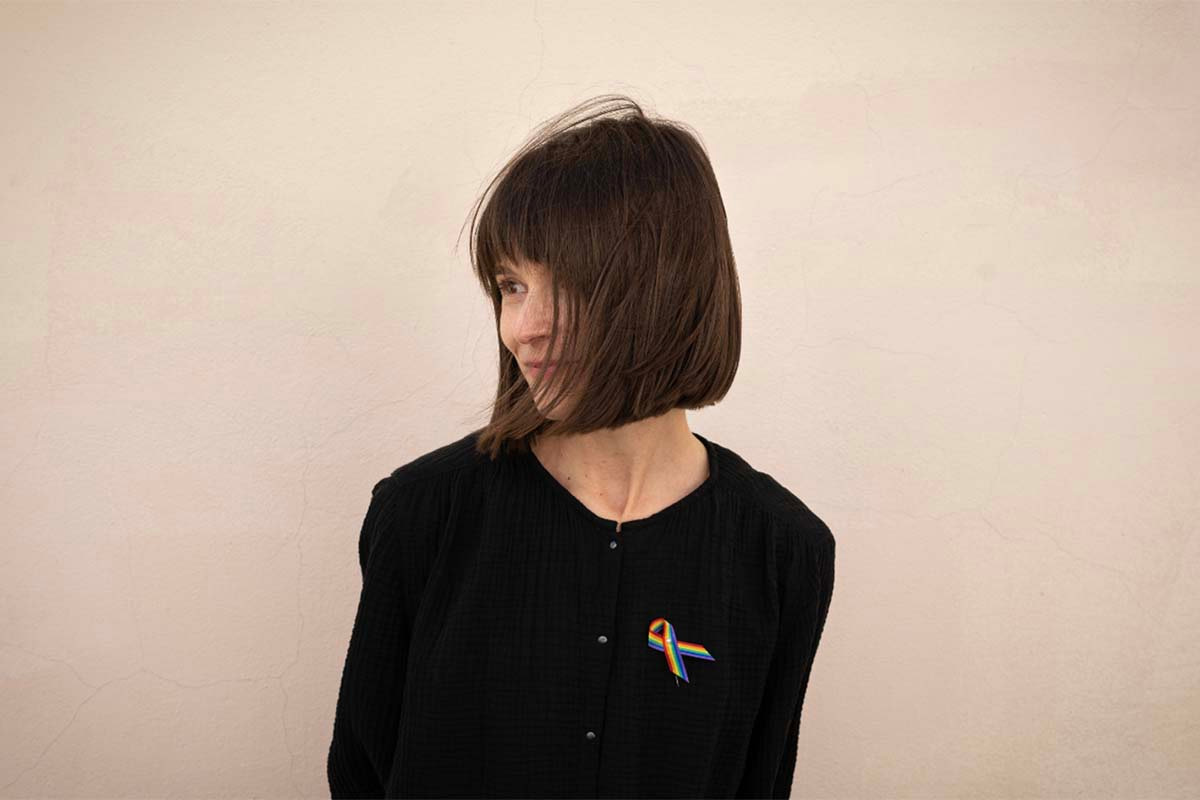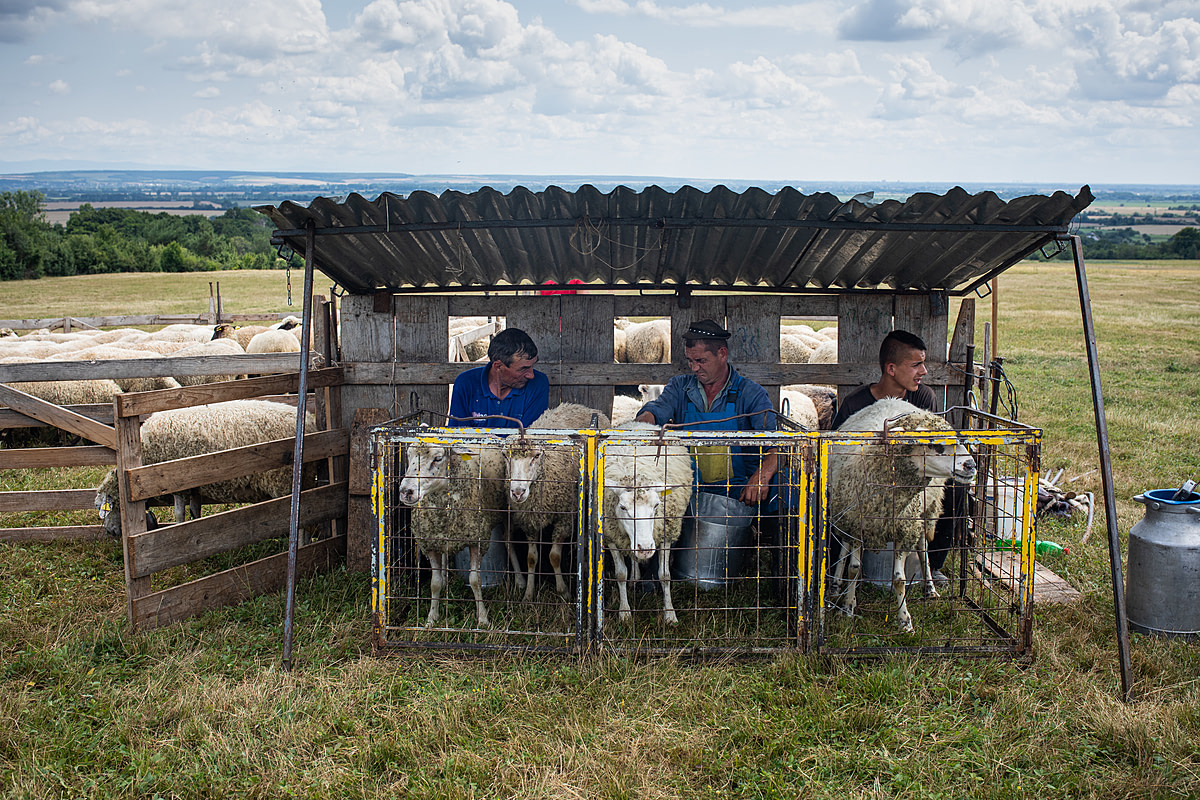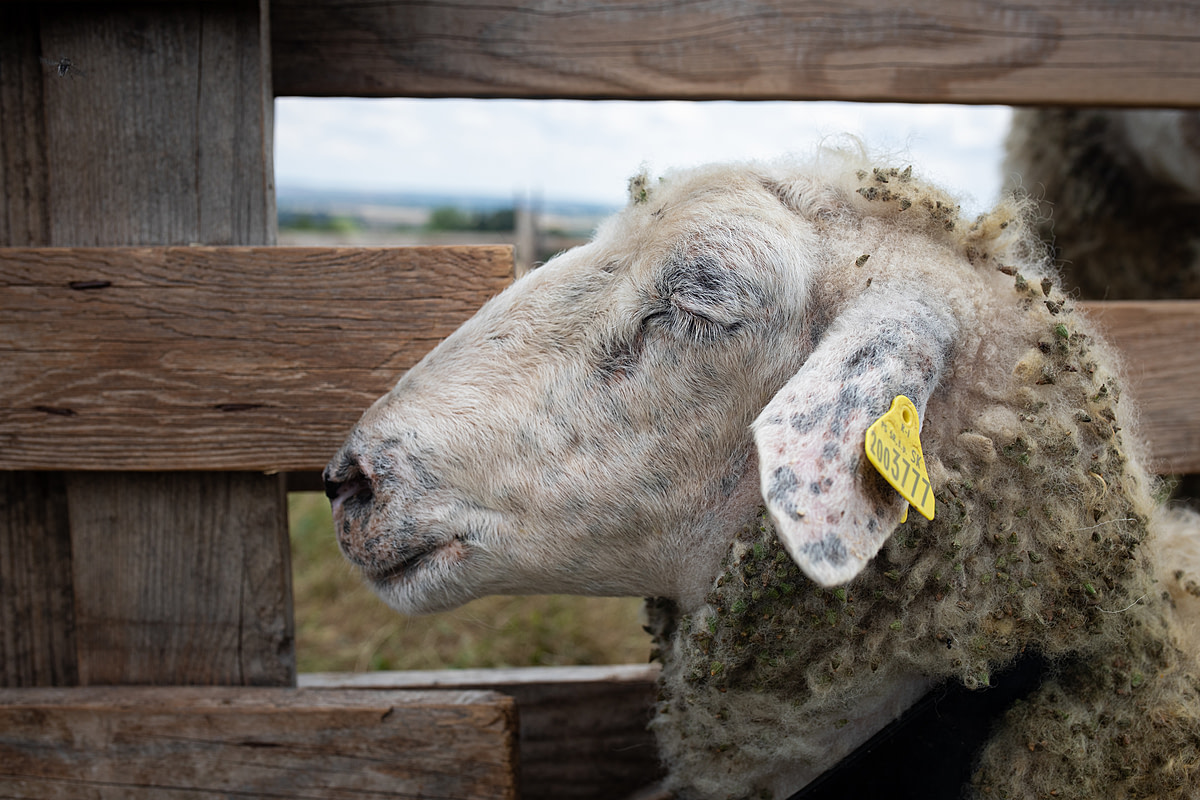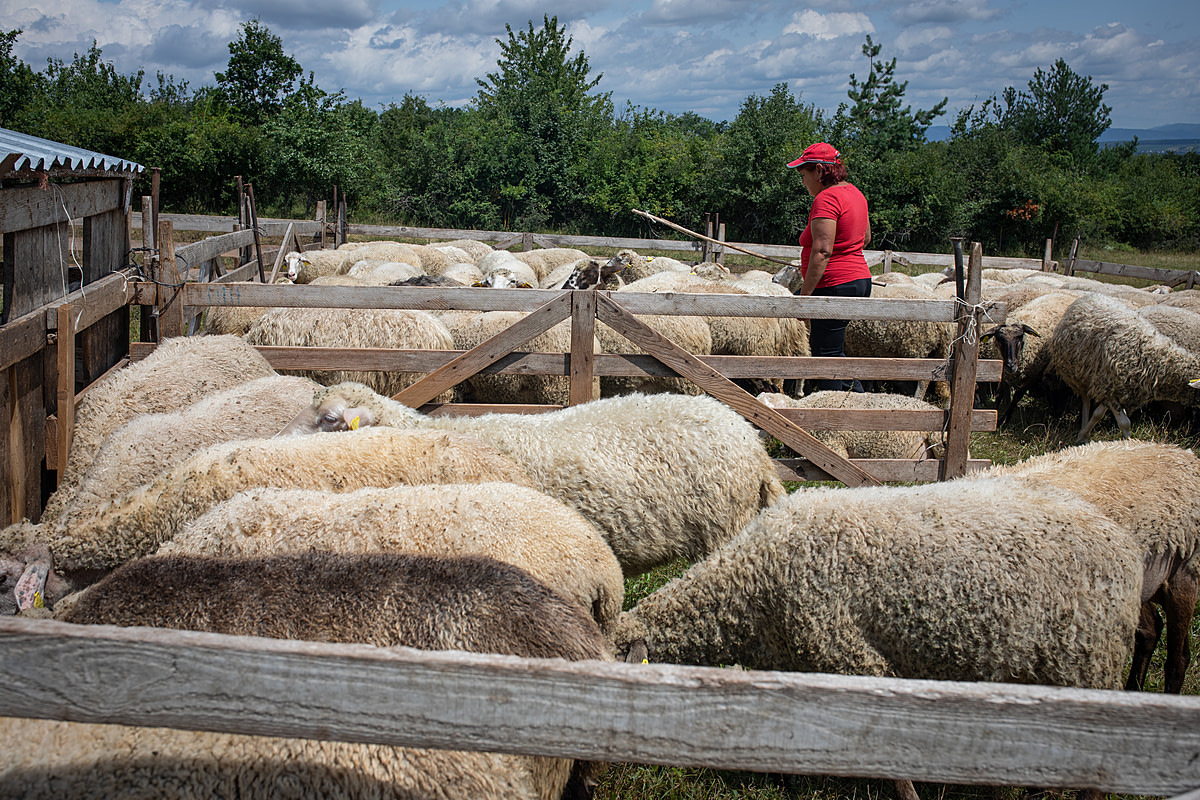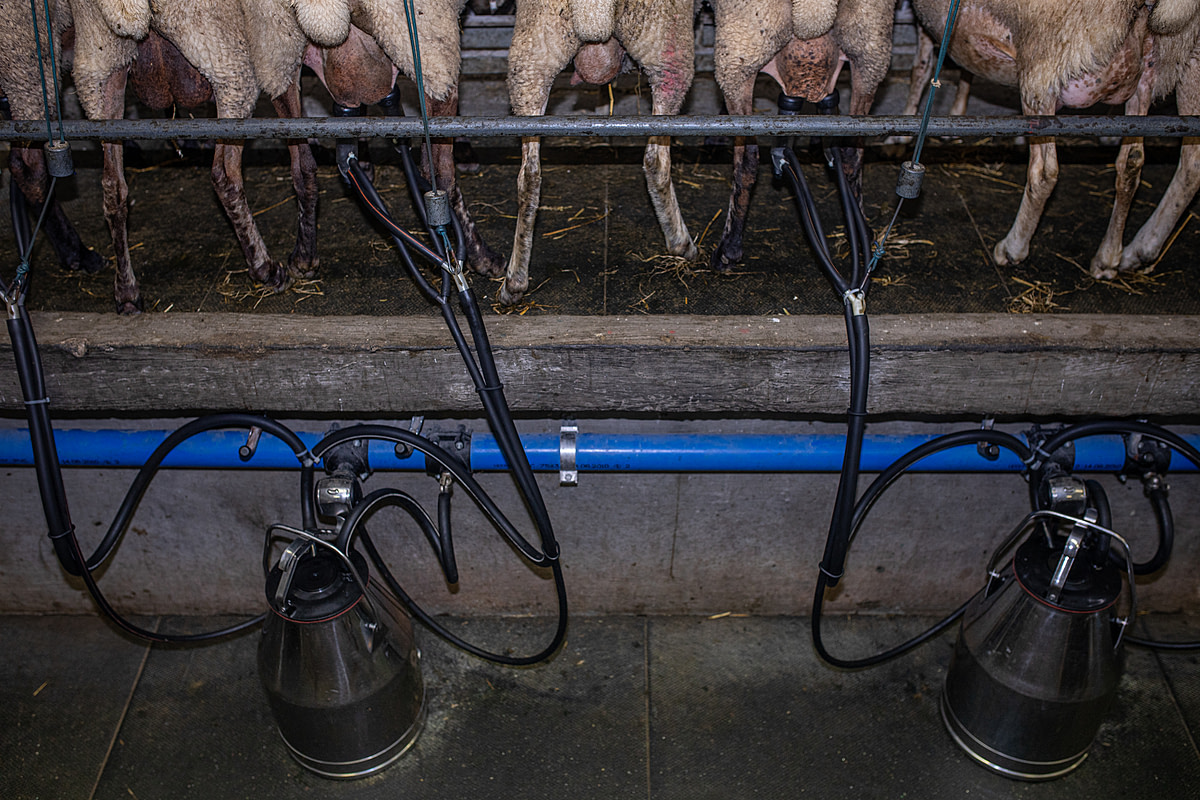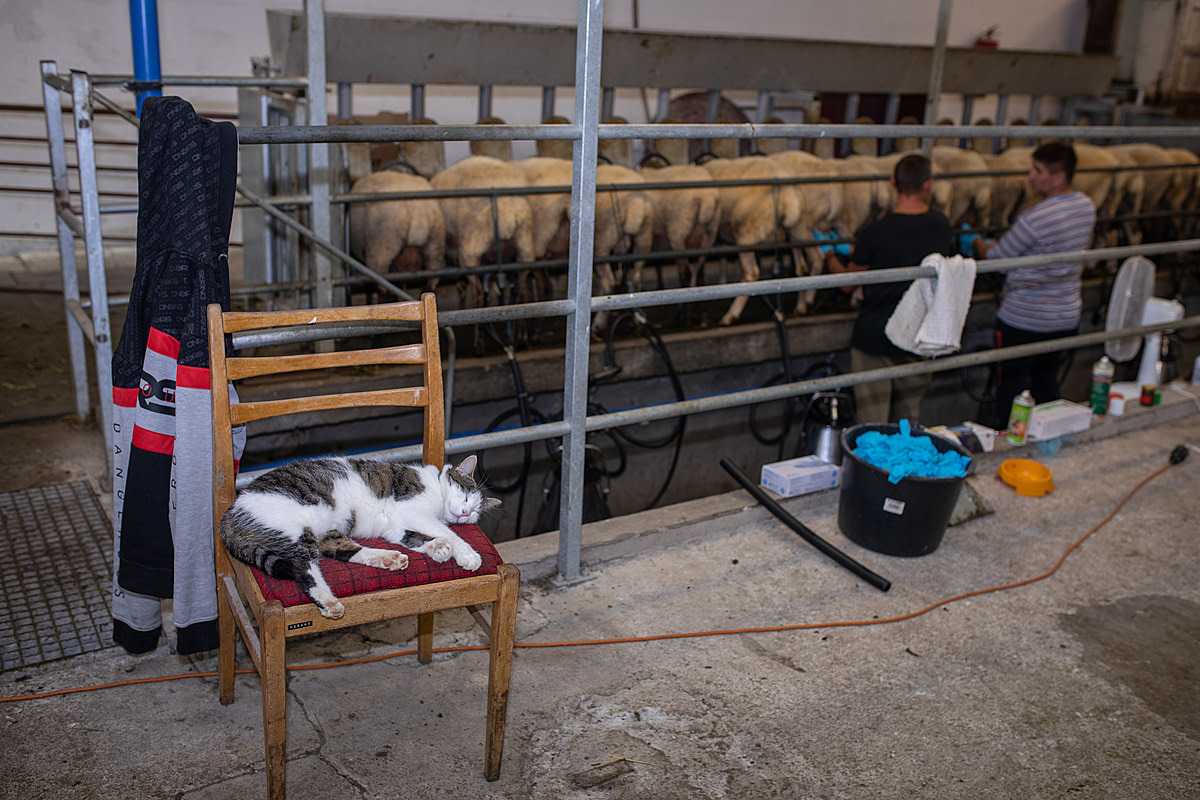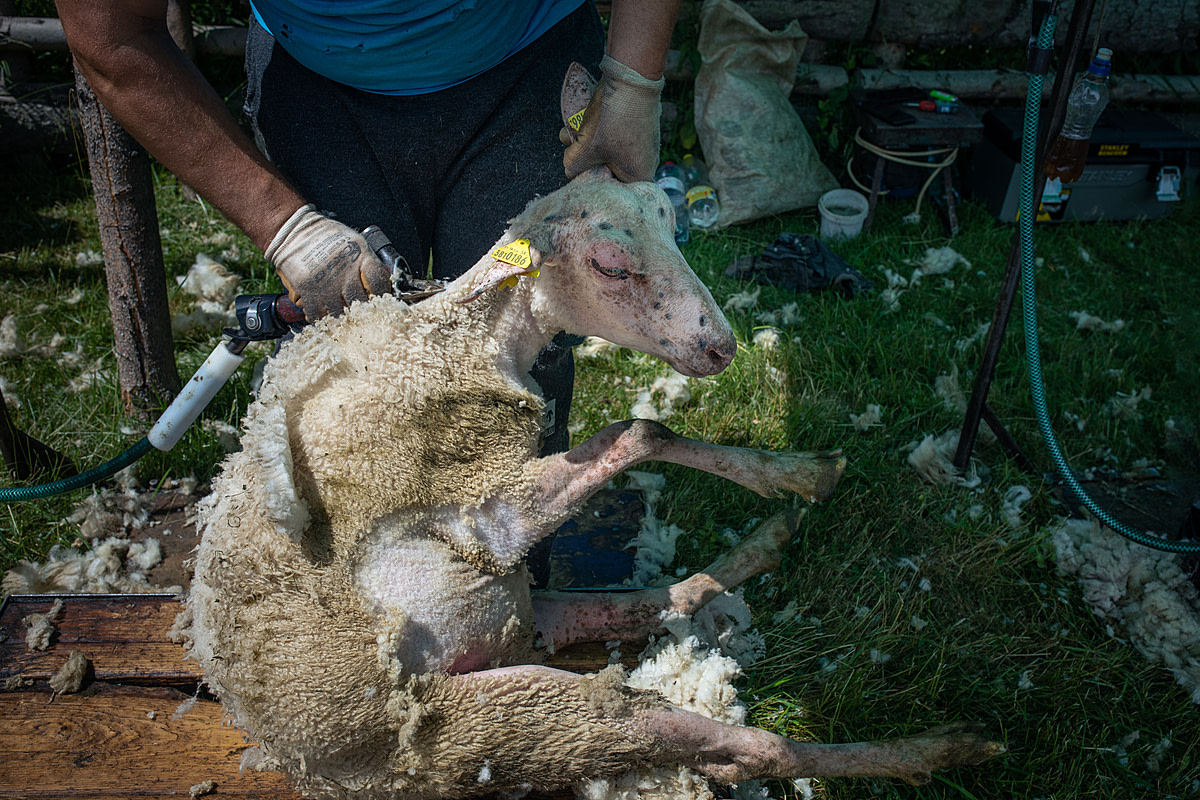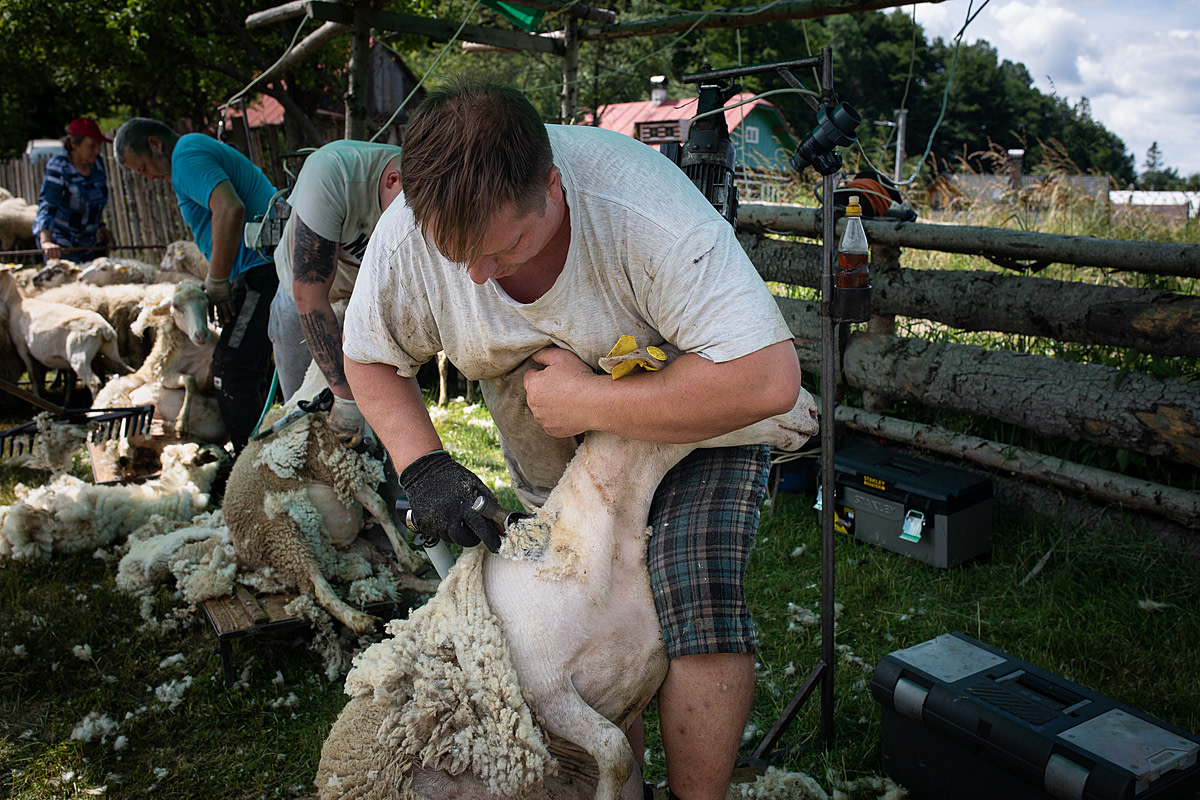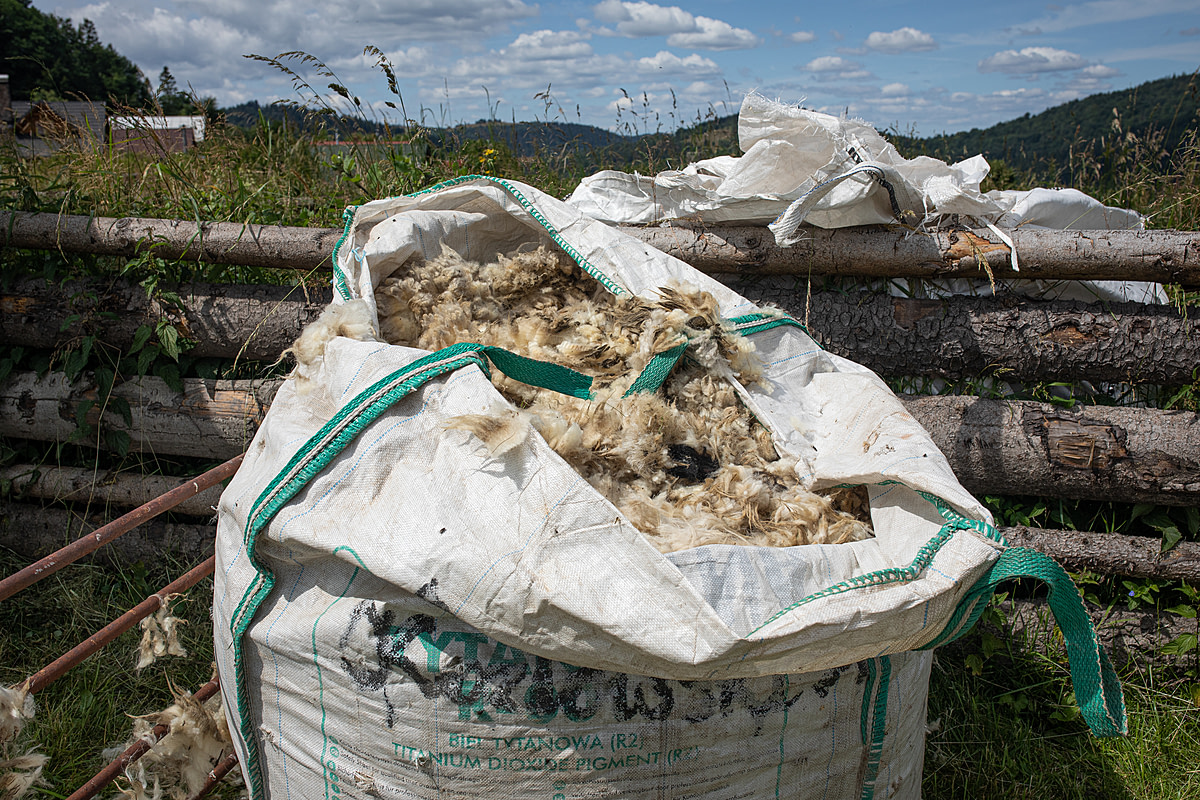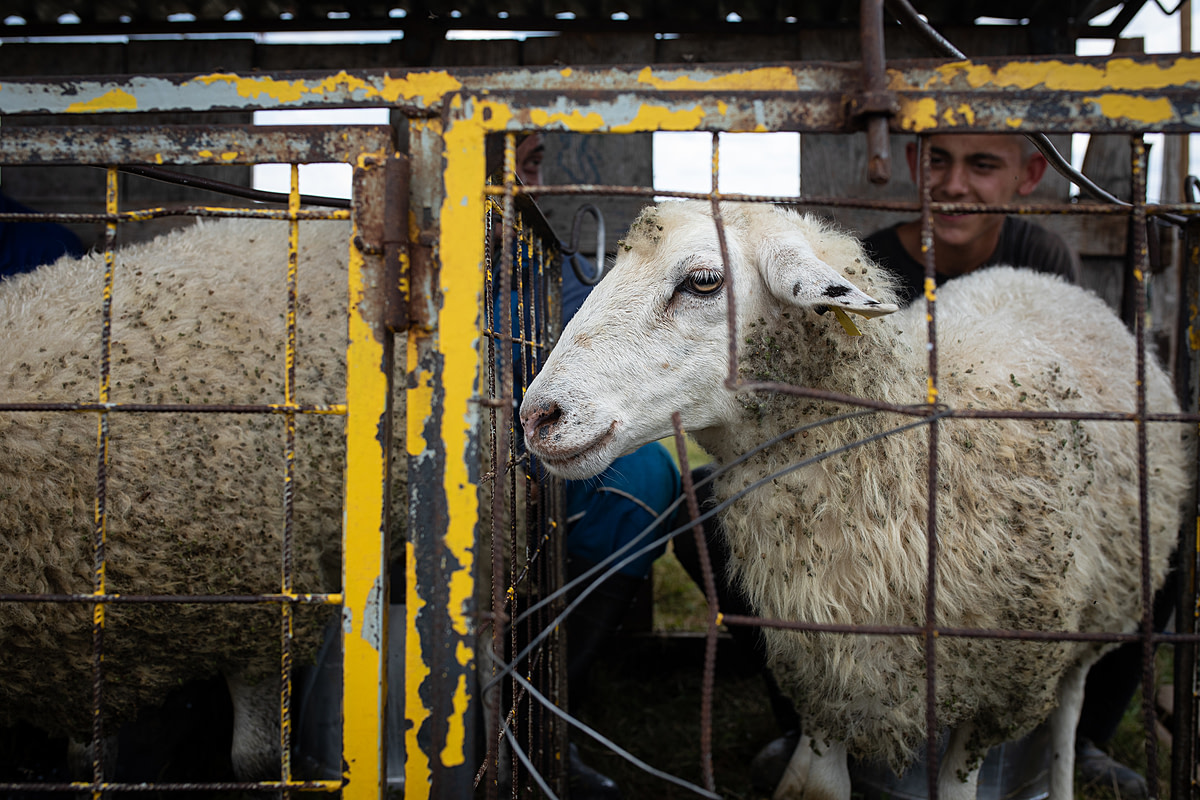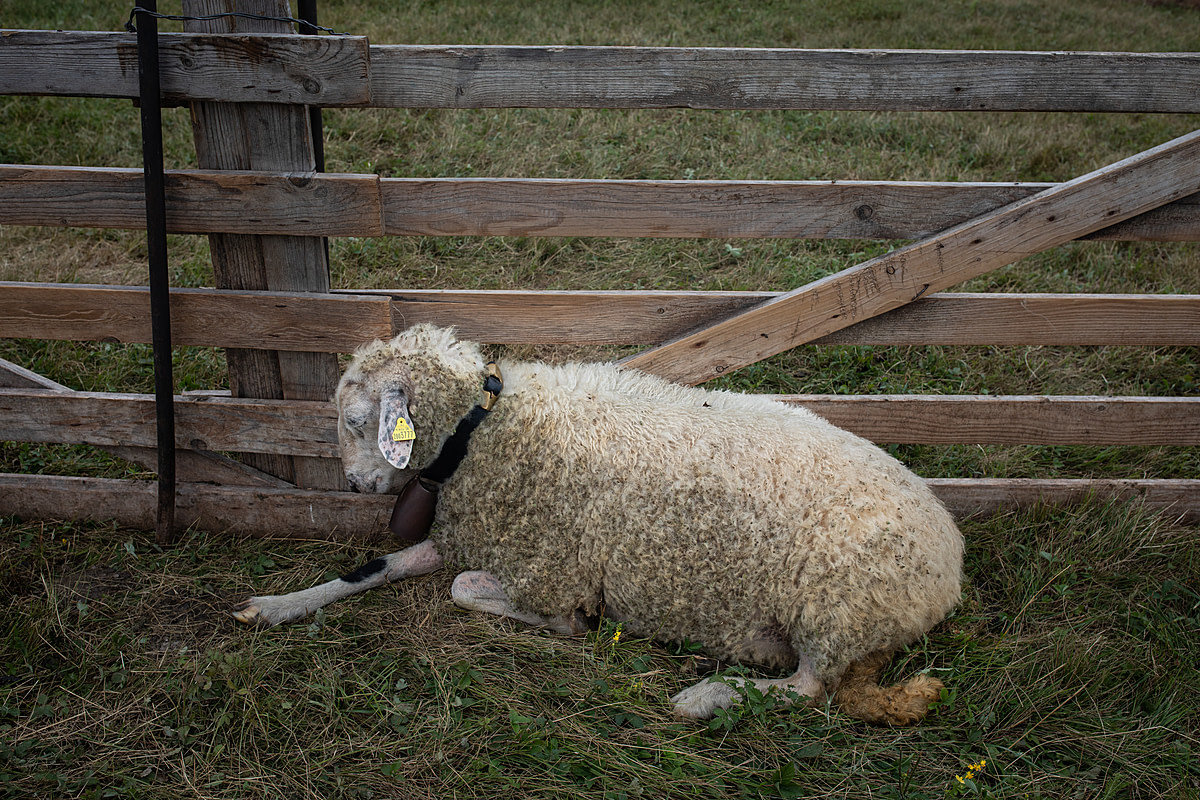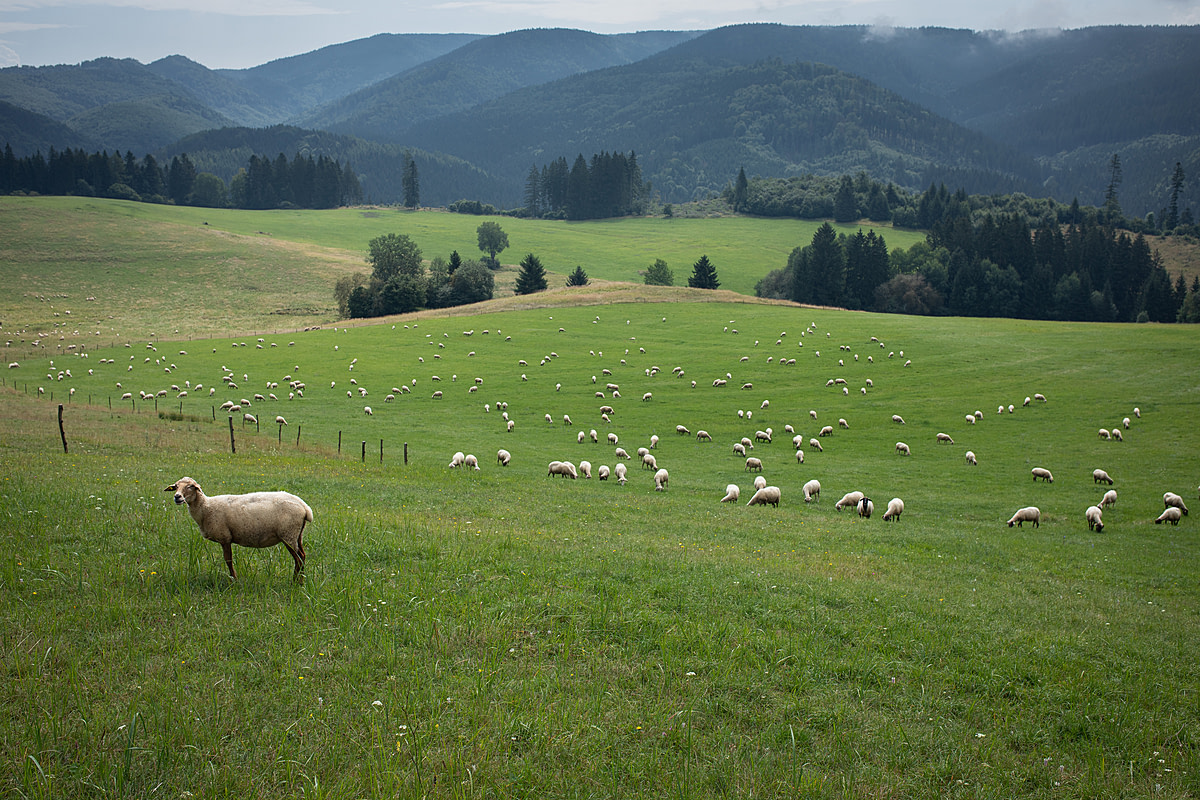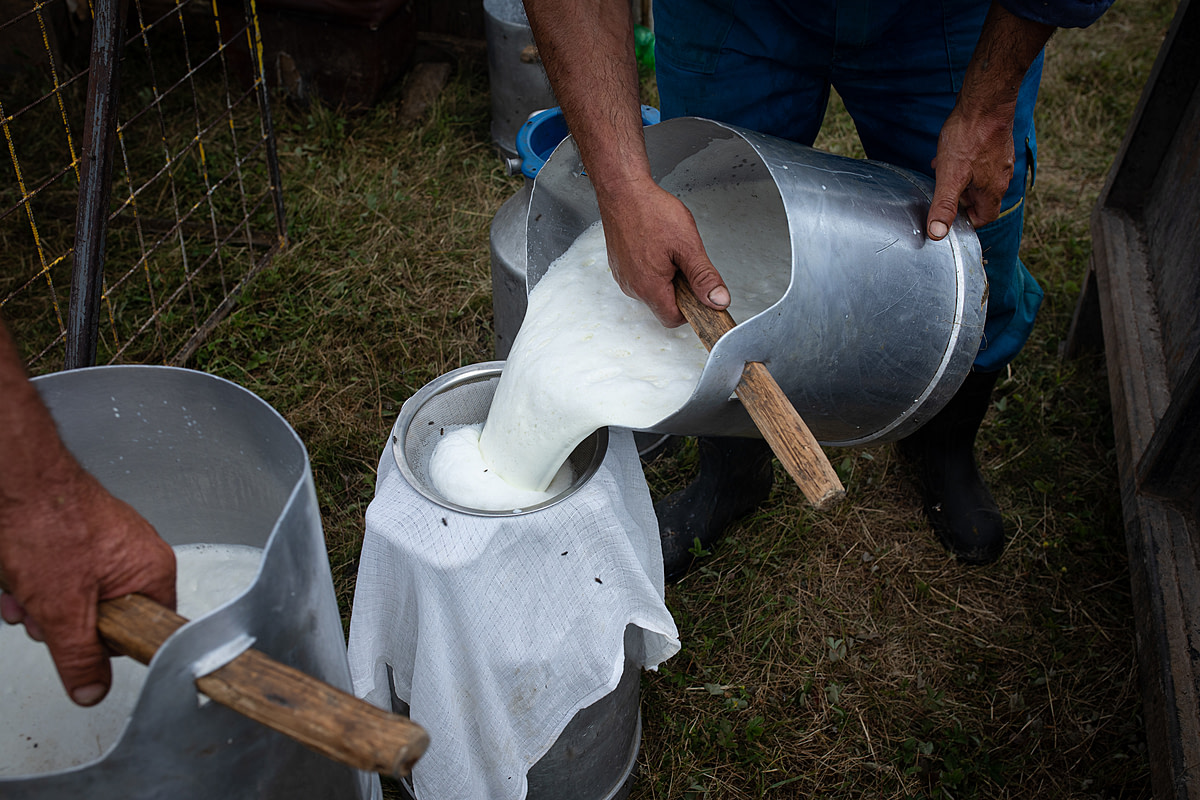We Animals Contributor, Zuzana Mit. Photo: Anna Ďurišíková
Zuzana Mit is a Slovakian photographer, animal advocate and author dedicated to education and awareness about animal rights and the impact of animal agriculture on the planet, animals and people.
We sat down with Zuzana to learn more about her journey into animal photojournalism.
Photographer: Zuzana Mit
Interview by: We Animals
We Animals (WA): Which came first for you: animals or photography? Can you tell us a little about your path to where you are today?
Zuzana Mit (ZM): Animals. At the age of 18, I became a vegetarian and took up photography later during my university studies. I was especially amazed by analog photography and spent a few years shooting exclusively on film. About six years ago, I went vegan and found out that the film used in analog cameras contains gelatin, which made me stop and I didn’t pick up the camera for a few years. Three years ago, I had an ambition to put together a vegan cookbook (which eventually did not happen) and bought a digital single-lens reflex camera. It was a great opportunity to get back into photography, which I had really missed. At that time, I was starting an initiative focused on education and raising awareness about the life of animals in animal agriculture and the impact of animal farming on the environment. When using pictures from farms abroad, I came across the argument of: “this does not happen here”. So, I tried to use quality materials from Slovakia but there were none. For that reason, I decided to visit the farms myself and capture what happens to animals in those places.
Three ewes are hand-milked inside a small open-sided shed at a dairy farm. The milk’s smell fills the air, and a milk can sits nearby in the high summer heat. Recently milked ewes and others awaiting milking occupy an adjacent pen without provision for shade or other relief from the heat. Stankovce, Trebisov District, Kosice Region, Slovakia, 2023.
Zuzana Mit / We Animals
WA: What’s happening in animal photojournalism in Slovakia?
ZM: Basically nothing. I know of no one else who would be systematically engaged with this type of photography and I doubt there has ever been anyone. There were only local photos taken for specific campaign purposes–for example, to ban fur farming in Slovakia or cage farming of hens. The latter was taken by Andrew Skowron, a Polish photographer, under the Open Wing Alliance.
A recently milked ewe at a dairy farm closes her eyes as she rests on the ground, her wool filled with bits of common agrimony. The milking process in the day’s sweltering heat is stressful and exhausting for the ewes. Stankovce, Trebisov District, Kosice Region, Slovakia, 2023.
Zuzana Mit / We Animals
WA: Is there any particular visual you’ve created that you think represents your work and what you’d like to communicate to the world particularly well? Tell us why.
ZM: I have focused mainly on dairy farms up until now, mostly due to the fact that there are a lot of false narratives surrounding this type of production. People still tend to believe that cows produce milk “just like that”, without having to be pregnant first. Or that they do not suffer in the dairy industry. I was a vegetarian myself for many years because I believed exactly that. Today, I know that practices of the dairy industry are among the worst but remain well hidden. I visited many dairy farms in our country, and I can say that I have only seen frustrated, injured, sad, dirty, confined and scared animals. To see calves that are merely a few hours old – literal babies – taken from their moms and put into these individual pens broke my heart. I consider it to be the pinnacle of barbarism and a crime against the most natural instinct of motherhood.
I can often see all the despair, humiliation and pain caused to animals in the dairy industry in one single photograph, reflected in one particular cow. It was a hot summer day, and she was lying in the direct sun without any water, abandoned behind a barn. The farm employees tied her legs, because she was apparently sick, and just left her there. Behind her, there was another cow, already dead. I was pierced by her gaze, full of pain and anger. It was as if I felt everything she felt at that moment. It took me a long time to process this experience if processing it is even possible. I think about her to this day.
Ewes stand inside stalls and are milked in a sheep dairy farm’s milking parlour. Milking machine teat cups are attached to the udders of some of the sheep, and extract their milk into containers on the floor below. Cremosne, Turcianske Teplice District, Zilina Region, Slovakia, 2023.
Zuzana Mit / We Animals
WA: How much creativity can you as a photographer bring to a scene? You’re reporting as a journalist, but how much are you also trying to include your perspective as an eye-witness, as well as your own creative expression?
ZM: I’m a very visual person, and I am influenced by my work experience in book publishing and by having close ties to the world of illustration and graphic design. While taking pictures and editing them, my perfectionism becomes a struggle. When you go to a farm, you never know what the light conditions will be. Many situations are also very stressful. But I always try to take pictures of not just the animals, but also the broader environment in which the animals live. For example, at the beginning of this year, I took pictures of calves in individual pens with mountains in the background, which symbolizes a certain dualism to me. Similarly, while documenting a sheep farm, I took a photo of a cat just peacefully sleeping on a stool with sheep lined up behind her to be milked. I enjoy working with these forms of dualism, it looks somehow poetic to me.
A cat sleeps on a chair inside a milking parlour on a sheep dairy farm. Behind them, workers converse while a row of ewes are milked inside the building. Cremosne, Turcianske Teplice District, Zilina Region, Slovakia, 2023.
Zuzana Mit / We Animals
WA: This year you documented the lives of animals inside Slovakia’s sheep farming industry, which included dairy, milk and wool production. Can you tell us about your experience documenting these stories?
ZM: It was beneficial for me, mainly to get more information about sheep farming in Slovakia. There are things you just cannot find out about online but only through conversations with people employed on such farms.
Sheep farming is a Slovak tradition. When you walk through Slovakia, you can come across many restaurants called koliba or salaš, which offer meals and products made of sheep milk. Our national dish is bryndzové halušky, aka potato dumplings with sheep cheese, topped with bacon bits. Sheep are mainly let to graze freely, and this is where these romantic ideas about sheep farming come from. In reality, practices used in this area of the dairy industry are the same as those in dairy cow farming.
A sheep on a dairy farm is restrained by their ear while sheared with electric trimmers, a procedure carried out twice yearly by a trained shearing team. Some of this sheep’s wool is completely removed, leaving her with patches of bare skin. The process stresses the sheep, who may suffer cuts and wounds from fast shearing, rough handling, and further torment from flies attracted to their injuries. Cadca, Cadca District, Zilina Region, Slovakia, 2023.
Zuzana Mit / We Animals
While documenting, I noticed that even though sheep were grazing in pastures, they were in bad shape; they were limping or had visible injuries. They graze only from spring to autumn – during winter, they are housed in barns. On each farm, they were also forced to wear bells, which are irritating and even painful for them. What absolutely shocked me was the shearing, which was obviously very stressful for the sheep. They were grabbed by their legs and kept in very unnatural positions. After shearing, they were covered in cuts and left completely bald, which is not desired as the sun can burn their skin. It was also interesting to find out that most farms sell the wool to Poland and ship live lambs abroad, which brings them additional income. In Eastern Slovakia, I witnessed hand milking, which was quite a bizarre experience for me, apart from the whole practice being very unhygienic. I saw one of the sheep pee into the bucket of milk, which was noticed but completely ignored by the staff. In the milking parlour, I saw an employee hitting the sheep with a cable. So, behind the idyllic picture of Slovak sheep farming is, once again, only violence, exploitation and death at slaughterhouses.
Several sheep are sheared at once on a dairy farm by trained shearers. In the foreground, a shearer pins a sheep’s head between his arm and body to restrain them as he shears them with electric trimmers. The process stresses the sheep, who may suffer cuts and wounds from fast shearing, rough handling, and further torment from flies attracted to their injuries. Cadca, Cadca District, Zilina Region, Slovakia, 2023.
Zuzana Mit / We Animals
A full transport bag of wool freshly shorn from sheep on a dairy farm. A trained shearing team removes the wool from the sheep on this farm twice yearly. The process stresses the sheep, who may suffer cuts and wounds from fast shearing, rough handling, and further torment from flies attracted to their injuries. Cadca, Cadca District, Zilina Region, Slovakia, 2023.
Zuzana Mit / We Animals
WA: Who inspires your work? Do you have any top photography influences?
ZM: This may come as a surprise but visually, I have been very inspired by Wes Anderson movies. When it comes to animal photojournalism, when I began I was very inspired by human.cruelties, a Polish photographer whose photos I used for my initiative, by We Animals, and by the Moving Animals project by Amy Jones. I also love the work of Selena Magnolia, Aitor Garmendia, Stefano Belacchi and another Polish photographer who is no longer active, Konrad Lozinski. I am also a fan of the photographer Havva Zorlu.
WA: When preparing for a field assignment, what’s your go-to camera bag kit?
ZM: I use a digital SLR camera, and I most often choose a 35mm lens for it (that’s my favourite). But I always take a 135mm and a 50mm lens as well. Then, an external light and flash (especially for large dark areas), and of course spare batteries and SD cards. Occasionally, I take a small collapsible reflector with me. However, because of the lower weight, I eventually want to buy a mirrorless camera, which nowadays provides similar quality output as DSLRs.
A ewe pokes her head through the broken metal wire of a small milking pen as she is hand-milked. Though the process takes approximately 30 seconds to complete, some sheep are so stressed from being milked that they try to escape. Stankovce, Trebisov District, Kosice Region, Slovakia, 2023.
Zuzana Mit / We Animals
WA: Many people would find it too difficult to photograph what you do. What helps you overcome the difficulties inherent with this kind of photojournalism?
ZM: I am a very empathetic, even hypersensitive person. So, when I started, I knew this would be hard. And the beginnings really weren’t easy for me. But I am working through it because I want to continue this photography journey and I know that it is very easy to fall into despair, anxiety and depression. My friends help me a lot – I have a few real ones who are my support system. Animals are also a great source of inspiration for me. I live with a rabbit and regularly visit sanctuaries. To be able to observe their personalities in a safe environment is fascinating and recharging. I am also engaged in creating books, I love illustrations and art in general. And finally, pole dancing helps me calm my mind – when I dance, it’s the only thing I focus on at that moment.
WA: If you could issue an invitation to other photographers to take up animal photojournalism, what would you say?
ZM: I am not much of a motivational speaker, but I would say that every photographer needs to realize that if they decide to take it up, it is primarily about animals, and they should think about their safety as well. Animal photojournalism is something like an intermediary. Animals are imprisoned by this industry, and they can cry, scream and fight but the society chooses not to see or hear them. Our task is to get their stories seen beyond the walls of farms and slaughterhouses. It is not an easy job, but it is very important, even revolutionary, as it can contribute to a change in the current oppressive system.
If we think more deeply about how immense and systemic animal exploitation is, each of us is responsible not only to observe, but also to act. It is not only farmed animals who are impacted by animal exploitation – animal agriculture hurts people, the planet and wildlife alike. The exploitation is interconnected and inseparable, so animals’ problems are humans’ problems too. Studies speak clearly – animal agriculture is one of the key drivers of climate change, biodiversity loss, dead zones in the oceans, deforestation and soil degradation. Through hurting animals, we hurt ourselves. Even in its most modern and innovative form, humanity cannot survive without nature and the ecosystems that we use for free. Humans need to urgently reconsider this relationship and the way we treat animals. Mass media have a great power to change people’s perceptions. Hence, in our efforts to change the world for the better, it is crucial for animals’ stories to be in the spotlight.
Several sheep are sheared at once on a dairy farm by trained shearers. In the foreground, a shearer pins a sheep’s head between his arm and body to restrain them as he shears them with electric trimmers. The process stresses the sheep, who may suffer cuts and wounds from fast shearing, rough handling, and further torment from flies attracted to their injuries. Cadca, Cadca District, Zilina Region, Slovakia, 2023.
Zuzana Mit / We Animals
WA: What’s next for you in your work? Are there any particular animal stories you’re particularly compelled to document?
ZM: I would like to focus more on domesticated birds and pigs. This is a bit more complicated as nearly all pig farms in Slovakia fall under Danish corporations that are more cautious and secure the farms quite heavily. It is similar with broiler chicken farms. Up until now, I have visited only one such factory farm and it was one of the worst places I have ever been to. It would be very beneficial for me to cooperate with other animal photojournalists as there are places that you cannot enter and document on your own.
Follow Zuzana Mit’s animal photojournalism: @zuzana.mit
Photographer: Zuzana Mit
Interview by: We Animals
Explore a selection of Zuzana’s visuals via our stock collection.

